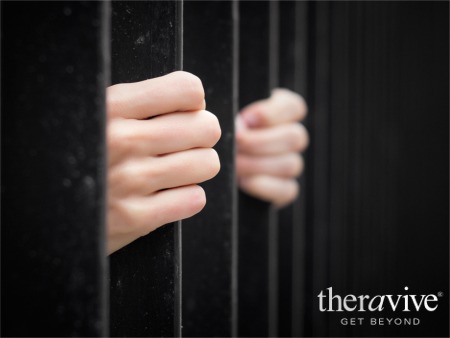 A young African-American woman was excited to finally land the job of her dreams. Though, she would be traveling some distance from her home town, she was ecstatic about the opportunity. Little did she know that she would never have the chance to start the job. On July 13, 2015, the woman was found dead in a prison cell. Where did it all go wrong? How did this young aspiring woman end up in jail and dead?
A young African-American woman was excited to finally land the job of her dreams. Though, she would be traveling some distance from her home town, she was ecstatic about the opportunity. Little did she know that she would never have the chance to start the job. On July 13, 2015, the woman was found dead in a prison cell. Where did it all go wrong? How did this young aspiring woman end up in jail and dead?
Sandra Bland just accepted a job and moved into her new apartment in Prairie View, Texas. On July 13, 2015, she was pulled over by police officials for not using her turn signal. An argument between her and the police officer ensued and the minor traffic violation turned into an arrest. Ms. Bland was reported to assault the arresting police officer. Hours later, she was found dead in the jail cell and the death was ruled a suicide. Suicide? Her family and supporters were not convinced that the young upwardly mobile woman would take her life when she had such a promising future.
As the media dived into Ms. Bland’s past, information surfaced that appeared to be unrelated to the arrest. Several reporters and journalist wrote that Ms. Bland had marijuana in her system. Others penned that she had a troubled past and a history of depression and post-traumatic stress disorder. Either fact didn’t appear to explain how the minor traffic violation ended in an arrest. She wasn’t arrested for marijuana possession nor was she imprisoned for being a sufferer of depression and post-traumatic stress disorder. So why was this information important? Many argue that disclosing the information was simply a measure used to discredit Ms. Bland.
Police Brutality and Recent Deaths
Police brutality and abuse of power has been highlighted over the last several months. The deaths of Trevon Martin, Michael Brown, and Freddie Gray gained attention and many criticized our justice system and their tactics. Ms. Bland’s death only brought further scrutiny to law enforcement. The question remains: was Ms. Bland’s death a suicide or a result of police brutality against a person of color?
Suicide and Incarceration
Suicide is reported to be the leading cause of death for those in police custody, according to an article in the Chicago Tribune citing Ms. Lindsay Hayes, a researcher with the National Center on Institutions and Alternatives. This fact can be especially true for first time arrestees as they may struggle with understanding the charges they are facing and the options they may have such as posting bail. It can be overwhelming and cause a sense of hopelessness. Beck argued that hopelessness is a strong predictor in the risk for suicide. In a prospective study, Beck et, al 1990 found that hopelessness, as measured by the Beck Hopelessness Scale, was significantly related to eventual suicide. It appears that prison sentence isn’t a significant factor in the risk for suicide among inmates. Mike Brooks, Law Enforcement and Public Safety analyst for HLN, CNN purports that inmates have committed suicide in holding cells for DUI’s suggesting that shorter prison time doesn’t necessarily decrease the risk for suicide. Instead, incarceration itself is a risk factor for suicide. In addition to incarceration, a history of mental health, a past history of suicide attempts and family violence are also among the risk factors for suicide.
In the case of Ms. Bland, Waller County officials report that she noted on a jail questionnaire at the time of arrest that she had a past suicide attempt after losing a baby. Further, as mentioned previously, sources suggest that she had a history of post-traumatic stress disorder and depression. In lieu of Ms. Bland’s alleged history and answers on the jail questionnaire, it appears that it would have been beneficial to place her on observation for suicidal behaviors. But instead, a video released by the local officials reveal that Ms. Bland went a period of 90 minutes with no one going in or out of her cell. While local officials may have released the video in hopes to defend their case, the lack of contact with Ms. Bland may reflect negligence on the part of the prison officials.
Despite information that suggests that Ms. Bland was a sufferer of mental health, the circumstances surrounding her death are questionable. In addition, Ms. Bland’s family is adamant that she wasn’t at risk for suicide. A family member reported that Ms. Bland had phoned for bail money shortly before her death suggesting that she wasn’t in despair.
Prevention
Given the literature, it appears that more measures may need to be implemented to ensure inmate safety. Providing information on the stress and overwhelmed feelings associated with imprisonment may be useful in increasing suicide awareness among prison officials. Training on the suicidal risks of inmates regardless of sentence length and charges may be crucial in managing the situation. Programs that teach about the signs and symptoms of a possible suicidal inmate and techniques to prevent suicide are key proponents in addressing the problem. Did Ms. Bland commit suicide or was she murdered? In either case, the literature suggests that both injustice and negligence may have been significant factors in her death.
References
Beck, A, Brown, G, Berchick, R, Stewart B, Steer,R (1990), Relationship between hopelessness and ultimate suicide: a replication with psychiatric outpatients.American Journal of Psychiatry. Feb;147(2):190-5
Meisner, J.. Bowean, L. (2015), Sandra Bland's death brings attention to suicide in jails. Chicago Tribune, Aug 16.
About the Author

Dr. Dawn Crosson
, Psy.DDr. Dawn Gullette Crosson is a native of Philadelphia, PA and received a Master's Degree in Community Psychology from the Pennsylvania State University. She later graduated from the Philadelphia College of Osteopathic Medicine with a Doctorate Degree in Clinical Psychology. She is a licensed Psychologist, trained in Cognitive Behavior Therapy (CBT) and Trauma Focused CBT and has been in the field of psychology since 1996.
Office Location:
845 Sir Thomas Ct
Harrisburg, Pennsylvania
17109
United States
Phone: 717-503-2244
Contact Dr. Dawn Crosson
Professional Website:
www.onepps.com